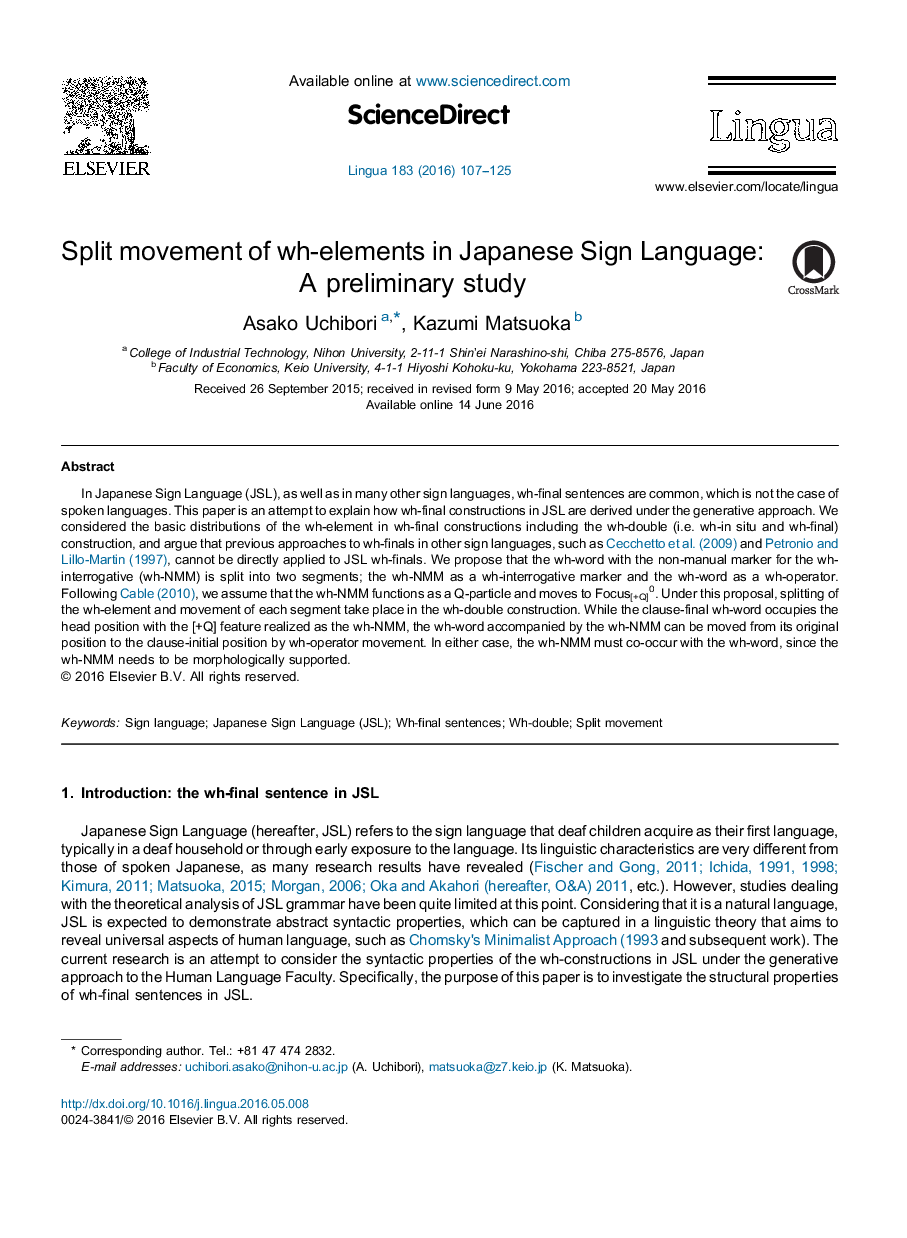| کد مقاله | کد نشریه | سال انتشار | مقاله انگلیسی | نسخه تمام متن |
|---|---|---|---|---|
| 5043074 | 1475032 | 2016 | 19 صفحه PDF | دانلود رایگان |

- We analyzed wh-final constructions in JSL under the generative approach.
- Previous approaches to wh-finals in other sign languages cannot explain JSL data.
- Wh-sign with non-manual marker for wh-interrogative is split into two segments.
- Splitting of the wh-element and movement of each segment take place.
- Wh-NMM is morphologically supported by wh-(manual) sign.
In Japanese Sign Language (JSL), as well as in many other sign languages, wh-final sentences are common, which is not the case of spoken languages. This paper is an attempt to explain how wh-final constructions in JSL are derived under the generative approach. We considered the basic distributions of the wh-element in wh-final constructions including the wh-double (i.e. wh-in situ and wh-final) construction, and argue that previous approaches to wh-finals in other sign languages, such as Cecchetto et al. (2009) and Petronio and Lillo-Martin (1997), cannot be directly applied to JSL wh-finals. We propose that the wh-word with the non-manual marker for the wh-interrogative (wh-NMM) is split into two segments; the wh-NMM as a wh-interrogative marker and the wh-word as a wh-operator. Following Cable (2010), we assume that the wh-NMM functions as a Q-particle and moves to Focus[+Q]0. Under this proposal, splitting of the wh-element and movement of each segment take place in the wh-double construction. While the clause-final wh-word occupies the head position with the [+Q] feature realized as the wh-NMM, the wh-word accompanied by the wh-NMM can be moved from its original position to the clause-initial position by wh-operator movement. In either case, the wh-NMM must co-occur with the wh-word, since the wh-NMM needs to be morphologically supported.
Journal: Lingua - Volume 183, November 2016, Pages 107-125